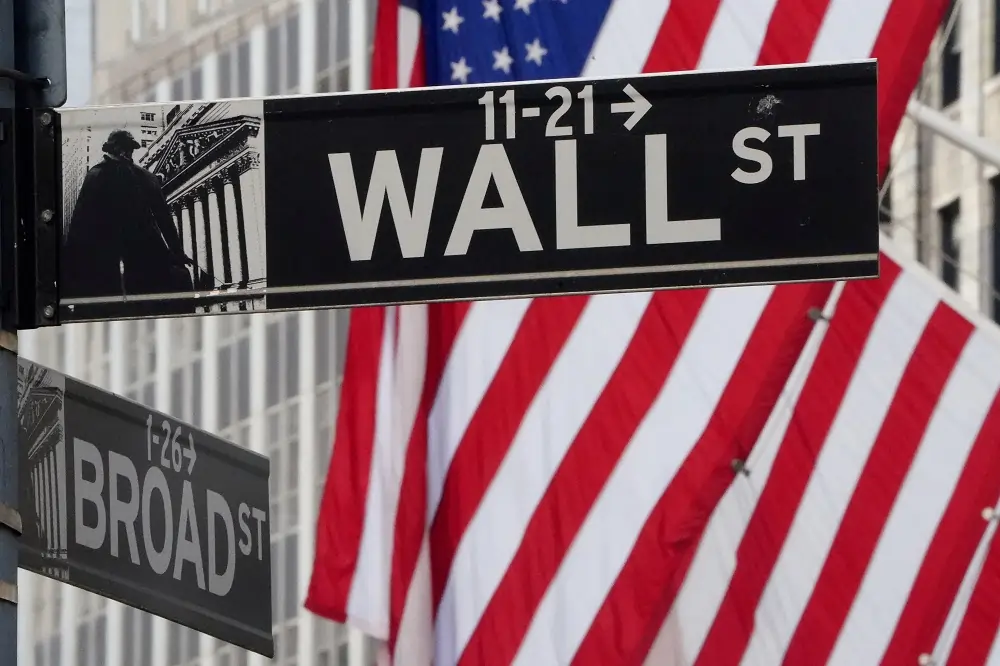
LONDON (Reuters) -Markets have raced ahead of the U.S., euro zone and UK central banks to price in sizeable and frenetic interest rate cuts next year, fueling a so-called everything rally that could now be vulnerable to a correction.
The U.S. Federal Reserve on Wednesday signaled it would cut rates more than previously outlined, sending global stocks and bond prices surging as markets priced in six quarter-point rate cuts in 2024, double the number projected by Fed officials.
The exuberance rushed over the Atlantic even as the Bank of England and the European Central Bank, holding borrowing costs steady, pledged on Thursday to keep monetary conditions restrictive as long as necessary.
European stocks hit their highest in almost two years after Wall Street stocks neared a record high the day before. The benchmark 10-year U.S. Treasury yield dipped below 4% for the first time since August, while German Bund yields hit nine-month lows.
The European moves were dominated by “market pricing in the U.S., which is quite eye-popping,” said Chris Jeffrey, head of rates and inflation strategy at Legal & General Investment Management.
“We struggle to work out what kind of world we’re in where you have 150 basis points of cuts in the U.S. next year without a recession,” he added, explaining that while LGIM was positive on government debt it was “not chasing the rally.”
Economists polled by Reuters expect the world’s largest economy to grow by 1.2% next year.
INFLATION CHEER
While rate cut pricing was pared back slightly after the ECB and BoE meetings, the scale of the cuts priced in remains significant, with investors cheered by signs inflation is falling fast.
Euro zone inflation tumbled more than expected to 2.4% in November, while in Britain it slowed to 4.6% in October, also lower than expected.
ECB president Christine Lagarde said “underlying” price pressures were moderating more than the ECB expected.
Traders now expect the central bank to lower its deposit rate from 4% to about 2.5% by next December, having added more than a 50% chance of an additional rate cut since Thursday.
They anticipate roughly 110 bps of UK rate cuts next year, more than before the Fed and even as the BoE cautioned rates — at a 15-year high of 5.5% — would stay restrictive.
The level of rate cuts now priced for the ECB reflected a “very very gloomy” economic and inflation outlook, said Danske Bank chief analyst Piet Christiansen.
“It seems quite an economic crisis scenario where you need to cut 150 basis points in one year,” he said, adding the risk is for government bonds to sell-off.
Rabobank warned that financial conditions had now eased “in such a rapid and significant way” that they could push economic growth and inflation higher, making central banks reluctant to cut rates.
Germany’s rate-sensitive two-year bond yield, touched 2.458%, on Thursday, its lowest since March. UK two-year gilt yields, at around 4.32%, were set for its biggest weekly drop since March.
RALLY ON
Meanwhile riskier European assets also rallied, suggesting investors in equities and high yield bonds were not concerned about the economic outlook.
European bank stocks, which are sensitive to worries about companies defaulting on debt, rose 0.8% on Thursday.
The cost of insuring exposure to debt defaults by junk-rated European borrowers dropped to its lowest since March 2022.
High yield debt, in general, was “pricing a high degree of the best case economic outcome,” Tom Ross, global head of high yield at fund manager Janus Henderson, said.
UK assets meanwhile also reflected a divergence of economic outlooks.
Britain’s economy unexpectedly shrank in October, data on Wednesday showed, in a boost for gilts.
Nonetheless, sterling also strengthened against the dollar on Thursday, gaining 0.9% to $1.2731. Retailers listed on Britain’s FTSE 350 index rose 2.75%.
For now, markets were simply rising in a burst of relief that a rapid rise in global inflation since late 2021 was going into reverse, investors said.
“The market is looking at the real economic numbers and they see inflation coming down and the potential for lower rates,” said Gerard Fitzpatrick, head of fixed income at Russell Investments, speaking ahead of the Fed’s Wednesday meeting.
“Investors are likely to paint a lot of this in a similar broad brush that inflation was a global story… and it’s sort of receding as a global story.”
Markets believed that “central banks as a whole are in roughly similar places,” added Moyeen Islam, fixed income strategist at Barclays.
“Their near term paths are probably coalescing and converging.”
(Reporting by Naomi Rovnick and Yoruk Bahceli; editing by Dhara Ranasinghe and William Maclean)


